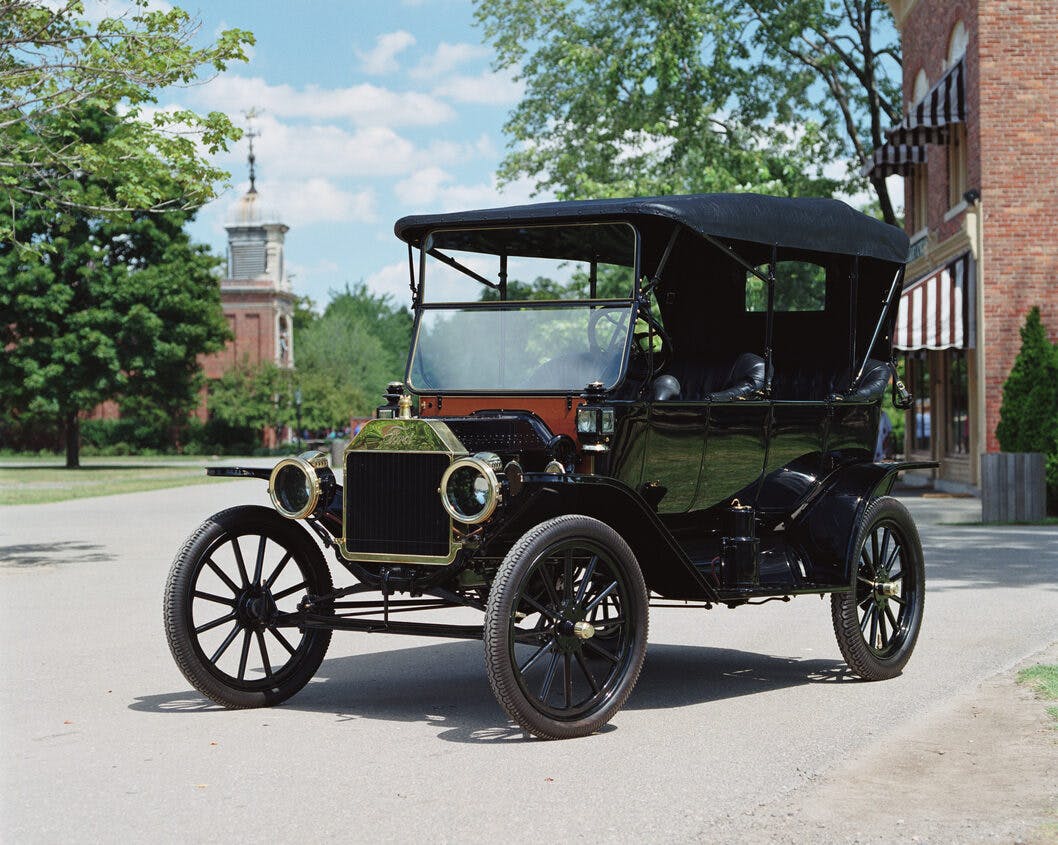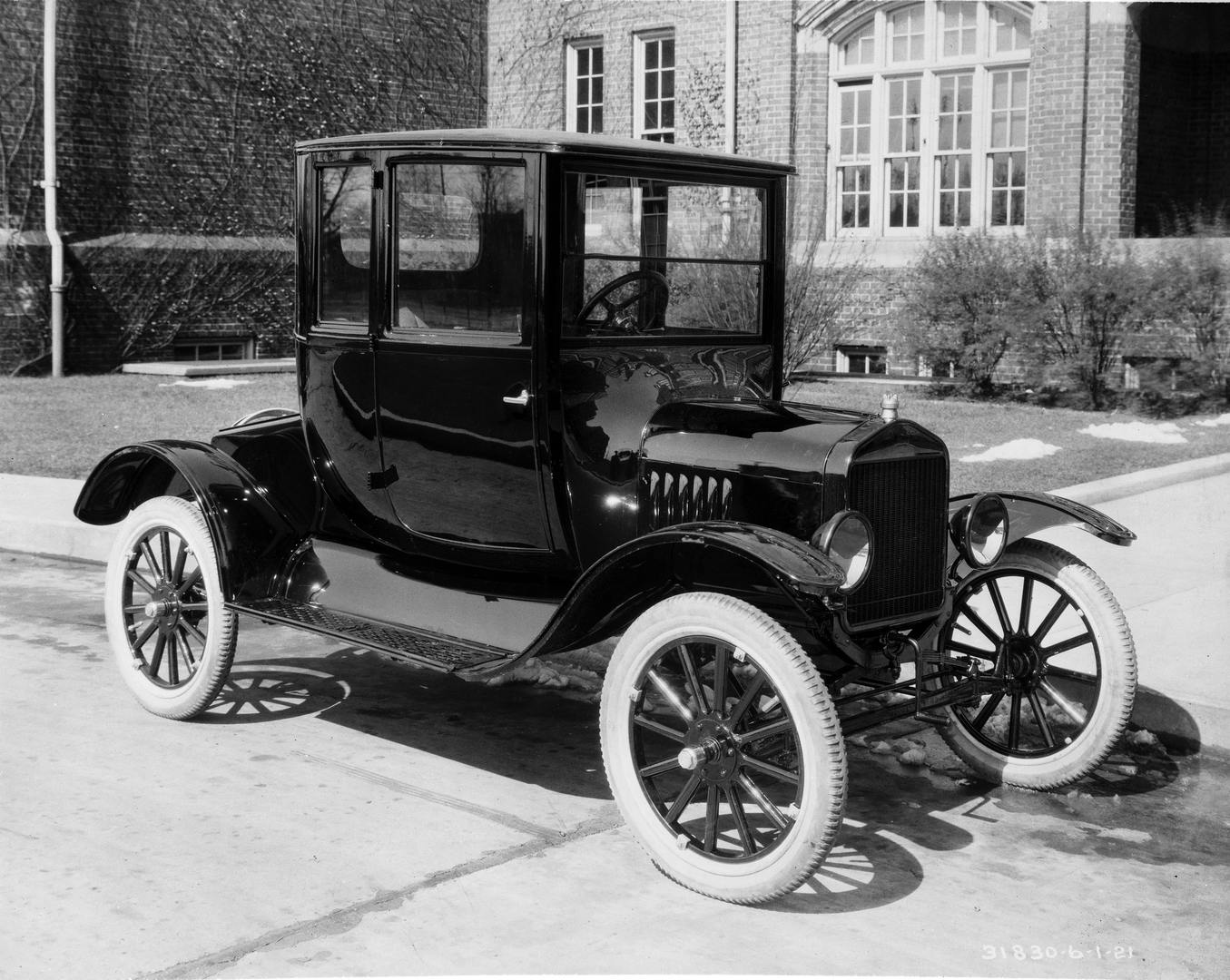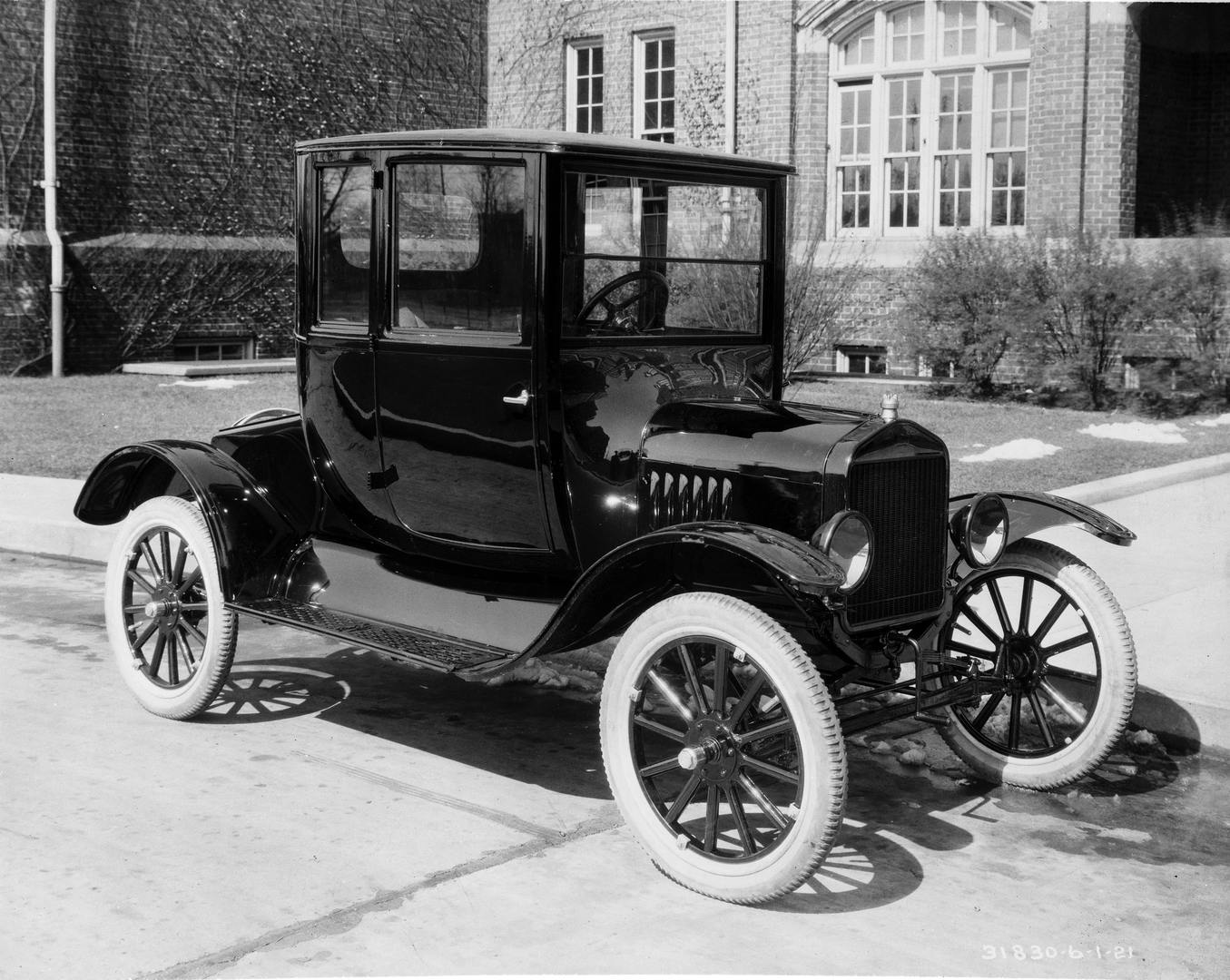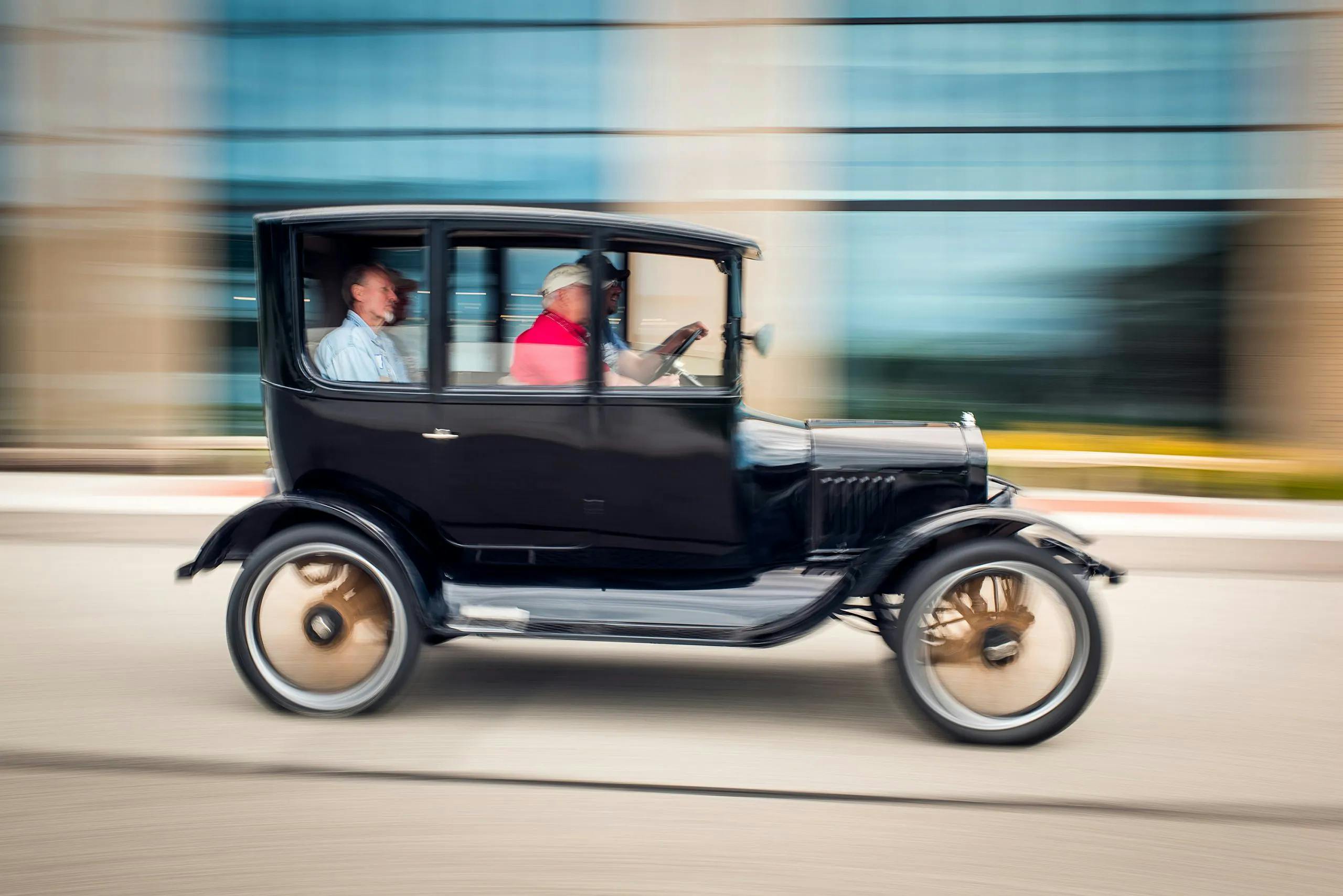Media | Articles
Ever popular, the Model T keeps chugging along
Few American cars have influenced history like the Model T Ford. This is the car that in its day was much more than a car: it put the U.S. on wheels and at one point had 61 percent of the overall automotive market. Times change though, and while more than 15 million Model Ts permanently altered how Americans went about their travel, the Model T faces a new challenge 115 years after its introduction: maintaining its relevance in the collector car world.
The Model T was born after a string of what is now known as the “alphabet cars.” Henry Ford and his team were innovating quickly, so naming convention may well not have been at the top of the list as they tested and evolved the automobile in search of the recipe that would change the world. Henry Ford was personally involved in the iterative process, and it was only after he put a Model T to the test on a hunting trip to Wisconsin and northern Michigan that it got his seal of approval.
With the T, they finally had the right product, and deliveries began in October of 1908. To the consumer, who up to that point had been cautiously getting a taste of the automobile, the Model T was the perfect porridge: affordable, simple, and comparatively reliable.
The Model T’s overwhelming success enabled its longevity, even in the face of competition that was swiftly catching up. It’s long been recounted that Henry Ford put up a stiff fight to the idea that Ford Motor Company should leave the Model T behind and advance to a new car, resulting in a long 1908–1927 production run. 1920s auto market dynamics aside, the result for the collector is a still-healthy array of Model Ts in a variety of configurations.
The T chassis accommodated multiple body styles, ranging from multi-row open touring cars to enclosed two-seat coupes, and even pickup trucks. Each has its use-based differences—the trucks are sprung for heavy loads while the cab used for the touring models prioritizes seating area. Any model is perfect for parades or tours on secondary roads, but the touring does offer the most versatility and usable space. Over six million touring-bodied Model Ts were produced—more than any other body style—but its popularity today matches its popularity from the roaring ’20s, and as a result the open touring still commands a premium.
Considering the length of its production run and the body styles available, the relative few changes made over the Model T’s life can feel surprising. The notion that all Model T’s were painted black, stemming from the famous Henry Ford quote was true, at least from 1914–25. It was in fact an effort to simplify the production process. However, Model Ts made before or after that window had color options including green, red, gray, and blue. Another change during Model T production was the addition of an electric starter. A “standard” T required the driver or passenger to stand in front of the car and use a crank start to turn the crankshaft manually till the engine started. According to varying sources, the electric starter became an option for open cars and standard in closed-cab Model Ts in 1919.
That electric start makes the car sound more modern, but the experience of driving what many call a Tin Lizzie is radically different than any vehicle produced after the invasion of Normandy. There are three pedals, but they don’t operate in the way you’re accustomed to. In order from left to right you have the high/low clutch, reverse pedal, and then the brake pedal. Two stalks placed on either side of the steering wheel control the ignition timing and throttle. The high/low pedal is set up to allow the driver to “float neutral” by holding the pedal in the center of its range. From there pressing down engages first gear in the planetary transmission, and releasing it completely engages high gear. It’s not that much different from some garden tractors today, except a Model T will putter down the road at 35 mph.

Driving a T feels overwhelming at first, with an abundance of controls that seem to require attention. In reality, it’s relatively straightforward—the timing lever is more or less set-and-forget once started, and your left foot controls forward motion while your right tends to the brakes and reverse. Most drivers familiar with driving a manual transmission can pick up the process and become competent in a short time. Henry Ford’s original design brief of being simple to operate still holds true even in an era where drivers have been increasingly disconnected from the car.
The steering is a quick ratio and the chassis is designed to flex, so the amount of body roll can be disconcerting at first. Once you’re used to that and offer the T smooth inputs, you’re rewarded with a capable, old-time treat as a mellow chuff, chuff, chuff comes from the single small exhaust under the car.
Thanks to the sheer volume of Model Ts out there, prices have long been relatively flat, though recent history has disrupted that. The momentary uptick in values during the pandemic has receded, and while #1 (Concours) and #2 (Excellent) condition cars appear to have found their footing slightly below their prior plateau, #3 (Good) and #4 (Fair) condition Model Ts currently sit slightly above 2020 values. The Model T is one of those collector vehicles with enough examples out there at any given time that if the prices start to trend up there will always be sellers primed to take advantage and thus drive the price back down.
As might be expected for a car of this vintage, boomers and pre-boomers are just under 60 percent of active buyers of the Ford Model T, as measured by Hagerty’s insurance quotes. Gen-X holds a 28 percent share, but perhaps most compelling is the growing level of interest from millennials and Gen-Z. In 2020, the two youngest cohorts of collectors made up 9.27 percent of quotes sought for Model Ts. Today, that number stands at 13.25 percent. While not dramatic, any indication that younger generations are gravitating toward the Tin Lizzie bodes well, not just for values, but for continuing to see these cars on the road.
A Model T rarely makes sense as one’s only vintage vehicle, but when added to a collection it can become a novelty that is fun, dependable, easy to repair, and has benefit of a community with tons of knowledge and support to keep it running and on the road. The Model T is the perfect car on which to tinker and learn, and to take out on special occasions. Though it’s not as functional as a more modern classic, to think of it that way misses the appeal of its altogether different driving experience.
Events for cars like the Model T are another part of the ownership draw. Whether it’s more traditional like the Old Car Festival at the Henry Ford Museum, or a mustachioed revival of old-timey racing put on at The Race of Gentlemen, there are plenty of get-togethers enticing younger buyers to search for aging iron.
Baby boomer and pre-boomer generations still hold nearly 75 percent of all Model Ts, but with younger generations moving in, the Model T’s place—not just in history, but on the road, where it belongs—remains safe for the foreseeable future.
***
Marketplace
Buy and sell classics with confidence
Check out the Hagerty Media homepage so you don’t miss a single story, or better yet, bookmark it. To get our best stories delivered right to your inbox, subscribe to our newsletters.









There are several owners of Model T’s in a group of car enthusiasts that I sometimes hang out with at a local drive-in. All of them also own other types of classics, but when they bring the flivvers, the cars tend to draw more attention than any of the other vehicles parked there. Several of them are happy to give rides around the block, and there are always lots of grins on the driver’s faces as well as the passengers. It’s fun to see people drawn to 100 year-old technology and design – and getting to experience those things – which are still very much alive and functional.
They are still cheap, still easy to work on and still all the parts to repair them.
They will always be the car for the base collector to buy and restore.
One day I expect to do one of these. I really would love to learn to drive one as it is a different experience. Used to be the Henry Ford Museum has a class to learn not sure that is still active.
I recall my father as a boy said there was a big hill by their farm and everyone would have to get out and walk up the hill and my grand father would back the car to the top. This was in the late 30’s.
Gearing was better in reverse for this hill.
There is also a point where the gravity fuel feed will no longer work properly because the incline the driver is trying to climb is too great. It sounds funny, but it happens!
That was the reason they moved the gas tank to the cowl from under the seat! I think that was in ’26, so very late in the run.
I “drove” a friend’s ’26 with full instruction on how to start it and getting it moving. Even with instruction and only moving it a bit forward and back it was… not intuitive. Could I do it now (10 years later) without further instruction? Mmmmmaybe.
Model A’s had a gravity feed gas tank. Steep hills starved the carb of gas so you had to back up a steep hill. Gearing had nothing to do with it. Sorry.
In the late models, the cowl tank was not always the problem. The transmission was…the forward bands were just used a lot more, hence, would wear more and slip on a hill. The transmission was sort of a prototype hydramatic sans fluid clutch. There are three pedals. Forward had two bands (low and high) to clamp on and hold the gears, plus a neutral position if held in the middle, and reverse had one; the third pedal was the brake (using reverse was often the better option). BTW, steering was direct and avoiding a “jack knife” depended on the skill of the driver. Finally, there is a floor mounted lever to the driver’s left [The purpose and operation of which can be mentioned at another time, as can the throttle and spark levers on the steering wheel, the magneto/battery switch center on the dash and the fuel control also dash mounted just ahead of the front passenger’s seat. Also, a battery/starter was an extra. A provided front crank was the starting default, which for the novice had possible serious downside consequences (broken/sprained/very sore arm), not to mention rain or winter conditions.
There you have it…Model “T” 101 for the courageous!
Wasn’t the case of the reverse gearing, it was the fact that the gas tank is located under the driver seat. As long as the car is on “level” ground, fuel flows freely into the carb. Going up a hill, the tank is physically lower or at the same level as the carb, and the engine starves out of fuel. Turning the car around to go up the hill in reverse, brings the tank level higher than the carb, thus keeping fuel flowing and the engine running. Driving one is a hoot, though I could never get over the “extreme” amount of chassis flex.
They are still cheap, still easy to work on and still all the parts to repair them.
They will always be the car for the base collector to buy and restore.
One day I expect to do one of these. I really would love to learn to drive one as it is a different experience. Used to be the Henry Ford Museum has a class to learn not sure that is still active.
I recall my father as a boy said there was a big hill by their farm and everyone would have to get out and walk up the hill and my grand father would back the car to the top. This was in the late 30’s.
Gearing was better in reverse for this hill.
They will never be worth a lot in value but they are worth their weight in gold for fun.
Gilmore Car Museum in Hickory Corners, Michigan offers a Model T driving school.
Attended the Gilmore class a couple years ago. Great fun experience and a chance to drive three different cars over about 4 hours. Highly recommended.
The values shown on the graph certainly differ from my own observations. Beautifully restored Model T’s and A’s do not generate anywhere near the prices seen on this graph. Most buyers are now seeking antique-based cars that can actually be used for transportation on public highways, with modern performance, ride, and handling. Check FB Marketplace and Craigslist…..restored antiques are just not coming close to matching their restoration costs.
Kyle is right about driving up a hill. Back in the day my father owned one and said when that occurred you would back it up the hill. That way the fuel would find the drain hole to the carb.
For the ultimate in Model T racing Google Tillamook County Fair Pig n Ford race.
Yes it involves Fords & pigs.
Whenever the Model T’s or Model A’s put through the car show every one stops to look. They bring joy to everyone.
100% agreement!
I recently sold my 1929 Model-A Tudor for $6,200. Decent car needing probably $2,000 worth of tires/ tubes/ some maintenance work and “stuff”.
My wife and I happened to be in Detroit last week, and we made our first ever trip to The Henry Ford. While we did not get to go for a ride this time, it was cool to see all the Ts zipping around Greenfield Village. The exhaust definitely had that vintage car smell, but I was surprised how quiet they were as they were motoring along.
I’ve recently heard a tale that there is one particular ‘T chugging around Greenfield Village that has never really been outside the village. Seems like a myth to me, but seems like a fun enough story to chase.
There are 4 model Ts that haven’t left the Village. The 1914’s. They were built by Ford for its 100 anniversary. The Village got the cars because it owned the blue prints. Ford only made 6 in 2003 because of cost. They have a fleet of more than 20 cars and one truck. Prior to Covid the cars would each be driven more than 10,000 miles a year in the Village. The engines and transmissions will go two to three years before they need major repairs.
Our kids and we rode in one of the 2003’s, back in summer 2003. It was really cool, since they were nearly brand new. Also cool was the college-age young woman driving it effortlessly, like maybe it was 1925.
After 115 years its still a head turner and look at car at any car show. Wonder if anyone will look at todays vanilla style tear drop design cars 100 years from now?
I loved the stories about my late Uncle Willy and his bar buddies buying Model T’s for $15 and drinking beer while racing them up a hill. Many times the would roll them over, laugh, get another beer and another Model T. Unheard of by todays standards but damn sure fun in the 1930″s.
I love the model T. I sold off all my other classic cars so I could build a garage and purchase a 26 Tudor from the late Model T Haven in Kansas. I am currently going thru every nut and bolt to bring it back to life. My hope is to have it finished for its 100th birthday. To me it’s the most important piece of Americana you could own in the car world. It’s the perfect mix between a tractor and car. Love it!
We drove our ’26 touring from central MN to the ND badlands, MT then WY and the Devil’s Tower, then to the SD badlands and Mt. Rushmore, then back across SD into MN, and then home, a little over 2000 miles unassisted and alone, never had a bit of trouble, was our best trip ever.
I’ve owned a 1919 T Runabout for a long time. The best thing about the Model T is the reliability. You could daily drive one practically forever with only slight maintenance. They’re that good.
I drove a well preserved ’23 touring my senior year in high school – 1951-52. My dad paid $100 for it at a used car lot in Jackson MS. A classmate and I drove it home – 55 miles. Had the traffic backed up anyplace there was no room to pass. Mississippi winters are wet and cold – in those years – but I drove it. And we did a couple of local parades. A pair of master mechanics rebuilt the engine and put new bands in the transmission. We bought oversized pistons and rings and misc. parts through the local Sears Robuck store on main street. One of the local swimmin’ holes was at the bottom of a long, steep hill. Yep, we had to back it up when leaving. Wished a tousand miles I kept.